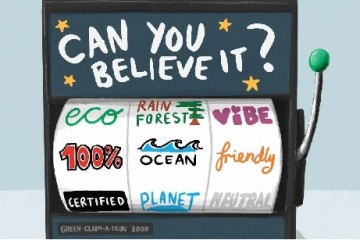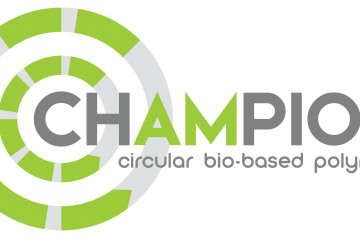Purchasing departments as game changers for sustainability
Much of the green marketplace has stagnated from lack of credibility resulting from a dearth of standards and transparency. Still, large companies are making efforts to put more sustainable products on the market. Most of their products are part of complex and increasingly international supply chains. A recent study from the Mc Kinsey Global Institute (MGI) showed that the value of globally traded goods grew from 4.4 to 17.8 trillion dollars from 1980 to 2012; 55% of these traded goods are typical supply chain goods: primary resources and intermediate products. These values are expected to grow up to three times by 2025. The sustainability of a product depends strongly on the weakest link in its supply chain. To control and improve sustainability of products, companies have to find ways to motivate and communicate with their suppliers and to verify the chain of custody of materials and intermediate products. Procurement and purchasing departments of large, multinational companies have an important role to play in this.
In this newsletter we develop an approach for companies to improve the sustainability of their supply chains, facilitate the definition and acceptance of procurement requirements and at the same time improve the internal communication between the CSR function and the purchasing department.
Setting the scene
A supply chain is often envisaged as a simple, one dimensional process. For illustration, a simple example of the supply chain for coffee looks like this:
 |
But even for coffee, the process of getting grips on the sustainability of its supply chain is complicated: farmers, roasting companies, retailers and consumers in different countries, all using different sustainability criteria, labelling schemes and verification procedures.
The reality is that many companies do not participate in just one supply chain, they are part of multiple supply chains. Companies like DSM, Dupont or Bayer for example are purchaser, intermediate supplier and retailers in the supply chains of plastics, food, feed and automotive products. They find themselves trying to answer questions they did not ask them before:
- What sustainability issues are relevant in our supply chains?
- How can we influence our suppliers on these issues?
- What do we really expect from our suppliers, now and in the future?
- What kind of proof of assurance do we expect?
Purchasing departments with a dynamic supplier base are expected to implement evolving sustainability requirements in their procurement processes. They are also expected to keep an eye on the sustainability performance of suppliers over time, guarantee that company policies are respected and give consideration to customer demands. Operationalising all this simultaneously, in an increasingly international environment, and for several supply chains is a big challenge that requires a methodical approach.
Developing an integral and methodical approach to sustainable purchasing
Developing a blueprint for the management of supply chain sustainability is not a simple task. In large companies, supply chain sustainability is a topic that has to be defined between the CSR function and the purchasing department. Most importantly, this blueprint should be tailor-made for each company. Structuring this complexity will require an initial effort, but will also result in a more efficient and less costly procurement process. Several initiatives in different sectors have proven helpful to organise and structure supply chains and sustainability such as the CO2Performance Ladder procurement tool and the Roundtables for the sustainability certification of food, forestry and other bio-based products. There are also new progressing initiatives like a future voluntary labelling of products by the Gold Standard Foundation. Some features of the CO2 Performance Ladder and the Roundtable on Sustainable Bio-materials (RSB) provide good hints of successful common factors for developing an integral and methodical approach for each company:
1. Define your sustainability focus.
What sustainability issues are relevant in a specific supply chain? How can your organisation influence and improve these issues? Managing sustainability is impossible without defining a focus and communicating it as a purchasing requirement. The best way to define a clear focus is to choose coherent sustainability principles according to what you, your customers or final consumers, and other stakeholders consider as relevant for your supply chain. ProRail is the company that initiated the CO2 Performance Ladder and is responsible for building and maintaining the Dutch railway system. They choose CO2 as one of their main sustainability issues because CO2 emissions related to transport are a major issue in the Dutch public debate. Most of the work for which ProRail is responsible is carried out by contractors. This results in extensive CO2 emissions, not caused directly by ProRail, but caused by its contractors in its services supply chain. Reduction of CO2 emissions related to the contracts ProRail puts on the market was a logical choice.
2. Adopt a clear framework for sustainability.
Becoming more sustainable is a process, which requires attention and continuous improvement. Most suppliers will consider sustainability important, but will need guidance to understand your focus and to learn where to start, what issues to address and how to set priorities. A clear framework can provide them with a common language that supports reaching your sustainability ambitions. This common language is also useful for companies internally. A good sustainability framework is more than a common language though; it must include clear sustainability requirements and accessible tools to prove compliance with those requirements. For many companies, sustainability requirements will go broader than CO2 reduction. These requirements may include other environmental aspects, or social requirements such as respect to safety and labour conditions, full assurance of no child labour, respect to land rights, etc. Tools to prove compliance may go from self-declarations or reporting requirements to full independent certification processes. Whatever the framework you adopt, make sure that it gives clear guidance to what is expected from you and your suppliers to become more sustainable. The RSB certification scheme provides with a well-structured, clear and progressive sustainability framework.
3. Combine suppliers’ performance level with assurance requirements.
The sustainability performance of any supplier can be rated comparable to the performance levels used in the CO2 Performance Ladder (see graph below). Performance levels go from knowing direct impacts, to organising the rest of the supply chain to reduce impacts elsewhere. Assurance of this performance can be provided in different ways, from self-declarations to third party certification. The selection of the assurance method depends on the characteristics of the supply chain, company policies and current practices. Assurance can evolve over several years, shifting from trust to proof. Combining performance levels and assurance methods results in a matrix that can form the basis for a long term planning tool for any company.
The combination of highest performance level with sustainability certification is very much possible though not immediate in all supply chains. Sustainability certification helps companies of various sectors to monitor environmental and social sustainable practices in their supply chains. Certification schemes are used in sectors such as agriculture, forestry, fisheries, food, textiles, carbon and water. They are also emerging in a range of new sectors such as mining and minerals. Certification is more effective in structuring supply chains when it uses the existing chains’ logistics infrastructure (avoiding extra costs), and does not cause disruption of the flow of any primary material or goods. The current proliferation of certification schemes does not necessarily help to improve sustainability though. In some sectors the assurance quality has been compromised due to low quality certification schemes (as discussed in our previous newsletter). The challenge lies in achieving mainstream adoption of best quality certification. We recommend to follow these steps for the selection of best quality certification schemes:
STEP 1: Identify the schemes with most comprehensive sustainability requirements according to the company’s defined principles;
STEP 2: Check that identified schemes follow clear quality standards like for example ISEAL’s Code of Good Practice for Setting Social and Environmental Standards;
STEP 3: Choose a strict chain of custody method suitable to the characteristics of your supply chains;
STEP 4: Select schemes with the highest level of transparency, auditability, assurance and enforceability;
STEP 5: Weigh costs and benefits of best certification options;
STEP 6: Select the certification scheme for your sustainability ambitions.
4. Encourage competitive advantage.
Essential for the success of any sustainability strategy. Challenge and stimulate your suppliers to improve through introducing some kind of positive gain or competitive advantage with respect to other suppliers. Looking at the example the CO2 Performance Ladder, an important element of its success is the incentive for participating suppliers. It is a voluntary system, but with a competitive advantage for better performing suppliers, as the Ladder gives them higher chances to win a procurement tender. Other types of incentives can be offered in other supply chains, offering suppliers some kind of benefit or special status if they reach a certain performance level.
5. Define a growth model.
here are many opportunities for sustainable improvements in supply chains. Often these are not recognised immediately due to lack of knowledge, awareness or cooperation. Realising these opportunities for a more sustainable supply chain is not something that can be realised within a year. It is a process that requires attention and continuous improvement over a long period of time. Unilever, as example, recognised this when they set their target to source in a sustainable way 100% of the agricultural raw materials they buy. They defined a period of over 10 years to reach this target by 2020. A growth model that provides a structure to develop knowledge and awareness and to actively look for reduction opportunities will help your company succeed. It will allow suppliers and procurement organisations to implement more ambitious policies over a number of years, taking into account shifting priorities and market circumstances. Companies will benefit from a regularly revised roadmap that step by step improves the use of a common language, and that includes a step by step introduction of good certification schemes as assurance method.
| Box 1: The CO2 Performance Ladder for motivating the supply chain to reduce their carbon footprint The CO2 Performance Ladder is a successful procurement tool with a strong focus on CO2reductions. It is used in the Netherlands for infrastructure tenders, service, maintenance contracts, and ICT and engineering projects. Research shows that the tool leads to real CO2reductions. The Ladder provides a common language for supply chain sustainability in procurement tenders. This common languages is defined in terms of “performance levels” for suppliers, and in terms of how sustainability is addressed and valued by buyers. The “performance levels” range from level 1 (supplier knows its own CO2 footprint) to level 5 (suppliers realises CO2 reductions in its own footprint and takes initiatives to organize CO2reductions elsewhere in the supply chain). Companies at level 4 and 5 are required to carry out sustainability studies and to look for cooperation in their supply chain. These measures result in very diverse projects such as logistics optimisation, reuse of concrete demolition waste in cement production or the development of energy label for elevators for example. At each level, requirements are set according to the following topics:
The Ladder is currently used by the Dutch highway and railway authorities, water management companies, municipalities and energy network companies among others. Over 400 companies are certified for the CO2 Performance Ladder; all these companies know their own carbon footprint; they are carrying out reduction efforts through increased energy efficiency, use of renewable energy and use of alternative materials. |
| Box 2:The Roundtable on Sustainable Biomaterials The Roundtable on Sustainable Biomaterials (RSB) is an international initiative that brings together farmers, companies, non-governmental organizations, experts, governments, and inter-governmental agencies concerned with ensuring the sustainability of biomaterials production and processing. RSB certification applies to biomass produced for a wide range of products, including, but not limited to, bio-chemicals, bio-plastics, compostable/biodegradable tableware, cosmetics, nutritional supplements, pharmaceutical, and feed. RSB is a full member of the ISEAL Alliance, which defines codes of good practices for standard-setting organisations. The RSB verifies and certifies the reduction of GHG emissions, the use of land, and biodiversity protection. On the social side, the RSB has been found as the most effective scheme to prevent:
RSB has become one of the most respected sustainability certifications in the world and its reputation is being recognised by other sectors different to biofuels. For example, Unilever recognises RSB-certified products as “sustainably sourced” fulfilling all the requirements of Unilever’s Sustainable Agriculture Code (SAC). RSB certified products will be integrated in Unilever’s supply chain without any additional sustainability check, thus facilitating access to Unilever’s procurement for RSB-certified producers. This will help Unilever to deliver their ambition to buy all their agricultural raw materials from sustainable sources by 2020 |
This newsletter is written by Vincent Swinkels and Sergio Ugarte and based on recent work we have conducted for various supply chain instruments, working for government agencies, industry associations, certification system administrators and individual companies.
Please contact either Sergio or Vincent if you are interested to learn more about the services of SQ Consult and our experiences.




